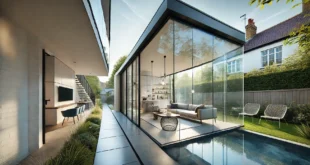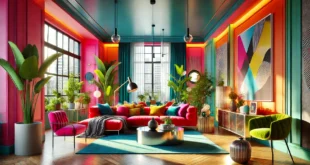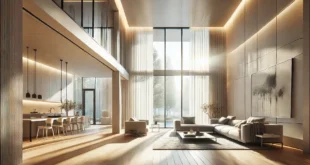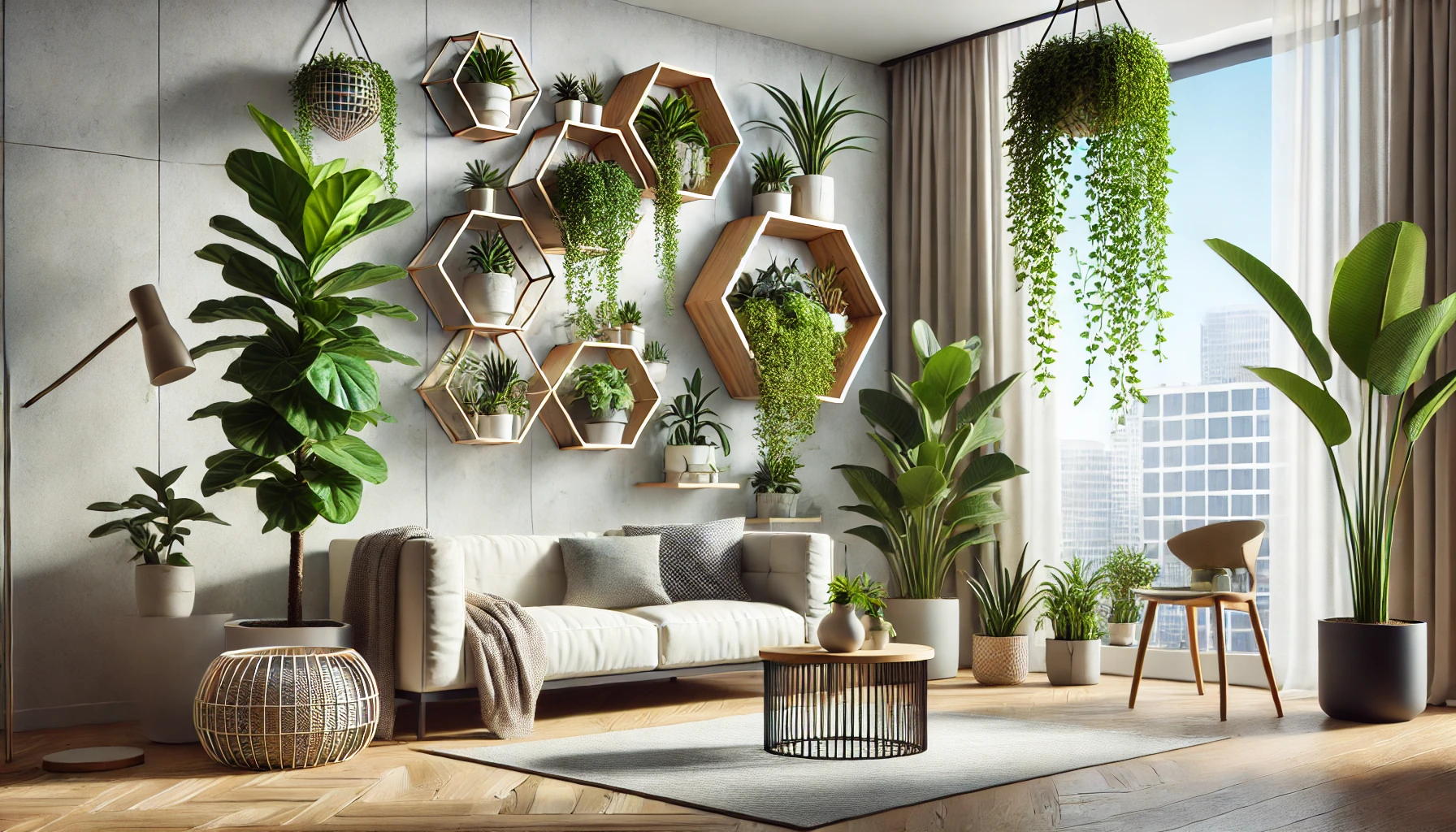
Welcome to the world of indoor plant design, where nature meets home decor to create vibrant, fresh, and stylish spaces. Indoor plants not only enhance the beauty of your home but also improve air quality and bring a sense of tranquility to your environment. As a professional home designer, I understand the transformative power of indoor plants and how they can elevate any space. Whether you’re looking to create a cozy living room, a fresh office space, or a calming bedroom, incorporating indoor plants into your design is a simple yet effective way to bring life into your home.
In this article, we will explore various indoor plant design ideas that cater to different tastes and spaces. From modern and minimalist designs to lush indoor gardens, there’s something for every style. Let’s dive into the world of indoor plant design and discover how you can create a beautiful, functional, and refreshing environment that enhances your living space.
Indoor Plant Design Ideas: Bring Nature Indoors
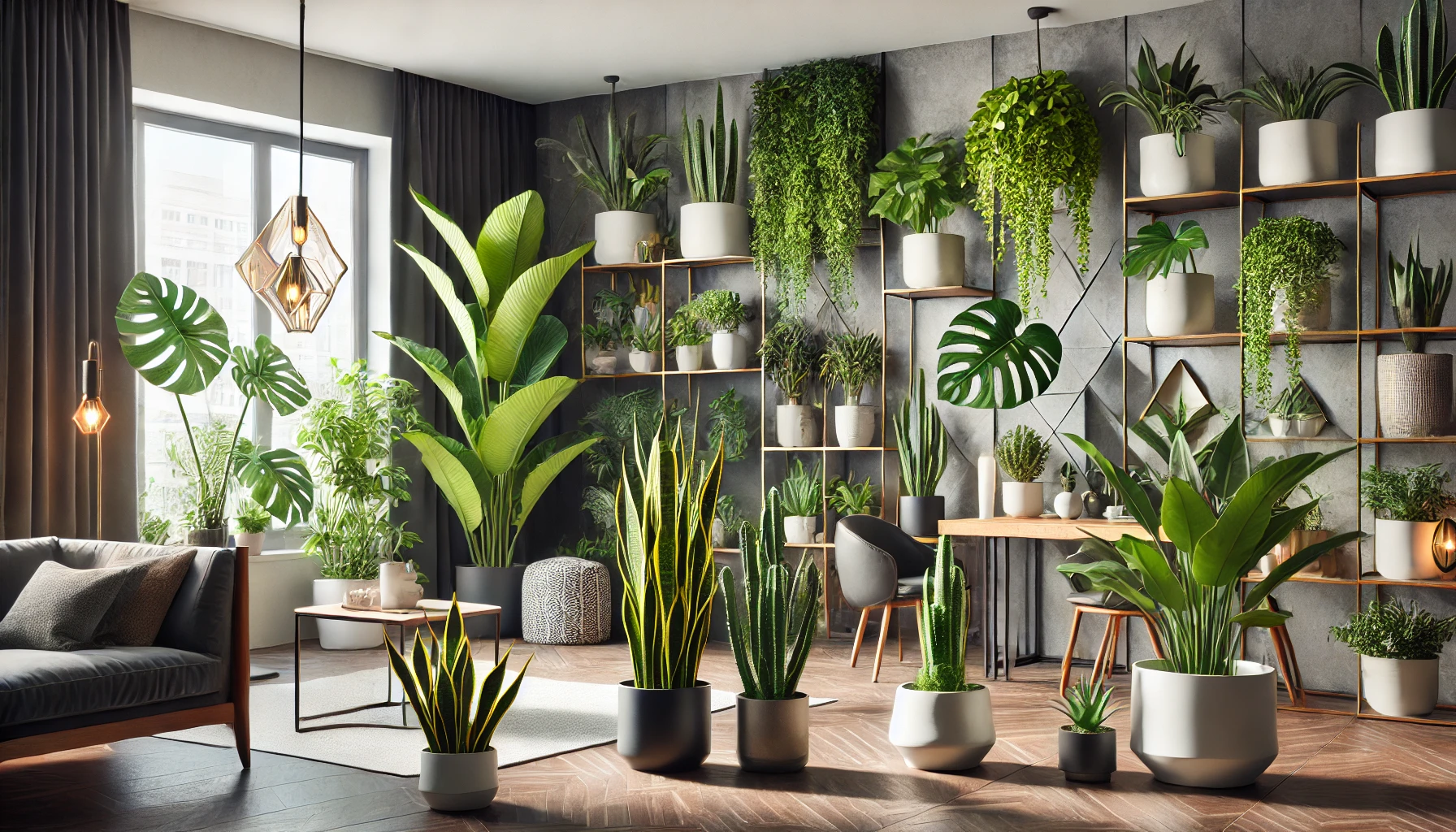
Choosing the Right Plants for Your Space
When it comes to indoor plant design, selecting the right plants is key. Consider the lighting conditions in each room and choose plants that thrive in those environments. For example, low-light plants like snake plants or pothos are perfect for darker areas, while succulents and cacti prefer bright, sunny spaces.
Think about the size and scale of your space as well. Large plants like fiddle leaf figs or monstera can make a bold statement in a living room, while smaller plants like succulents or air plants are great for adding greenery to shelves and desks.
Using Indoor Plants as Decorative Accents
Indoor plants are not just for filling empty corners—they can be used as decorative accents throughout your home. Group plants of varying sizes and heights together to create a dynamic display, or use a single large plant as a statement piece. Place plants on shelves, windowsills, or even hang them from the ceiling to add depth and interest to your space.
For a cohesive look, choose pots and planters that complement your home’s decor. Modern, minimalist homes might benefit from sleek, monochrome pots, while bohemian-style spaces can be enhanced with colorful, textured planters.
Best Indoor Plants for Home Decor: Low-Maintenance Options
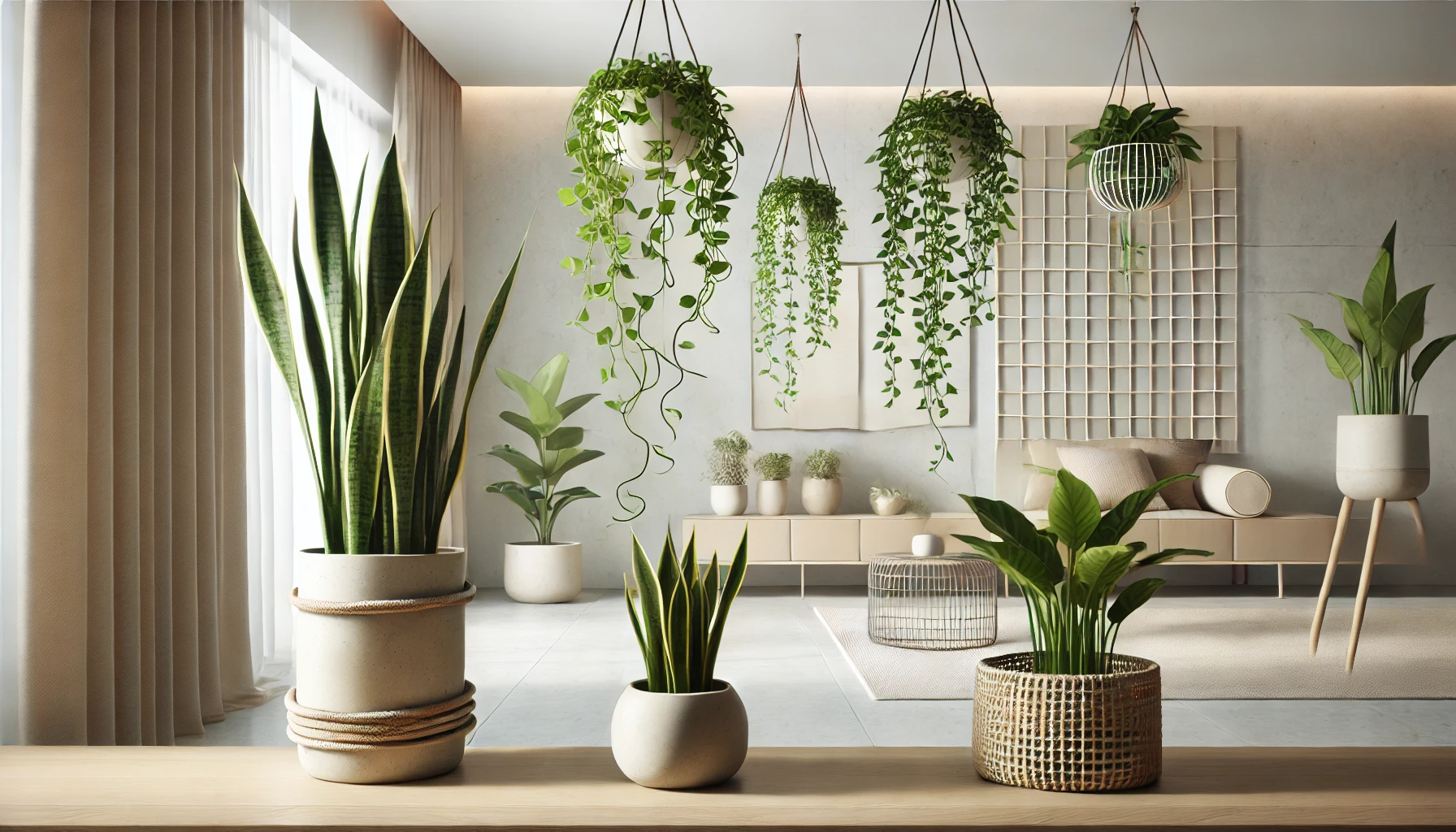
Snake Plants: The Ultimate Low-Maintenance Choice
Snake plants are one of the best indoor plants for home decor due to their striking appearance and low-maintenance care. These hardy plants can thrive in low light and require little water, making them ideal for busy homeowners or those new to plant care.
Place a snake plant in a modern ceramic pot for a sleek, contemporary look, or choose a woven basket for a more natural, earthy vibe. Either way, snake plants are versatile and can fit into any decor style.
Pothos: Perfect for Hanging Baskets
Pothos is another popular indoor plant known for its easy care and beautiful trailing vines. This plant is perfect for hanging baskets or placing on high shelves where its vines can cascade down. Pothos thrives in a variety of light conditions, making it suitable for most rooms in your home.
Use pothos to add a touch of greenery to your kitchen, bathroom, or bedroom, and enjoy its lush, vibrant appearance with minimal effort.
Modern Indoor Plant Design: Sleek and Stylish Greenery
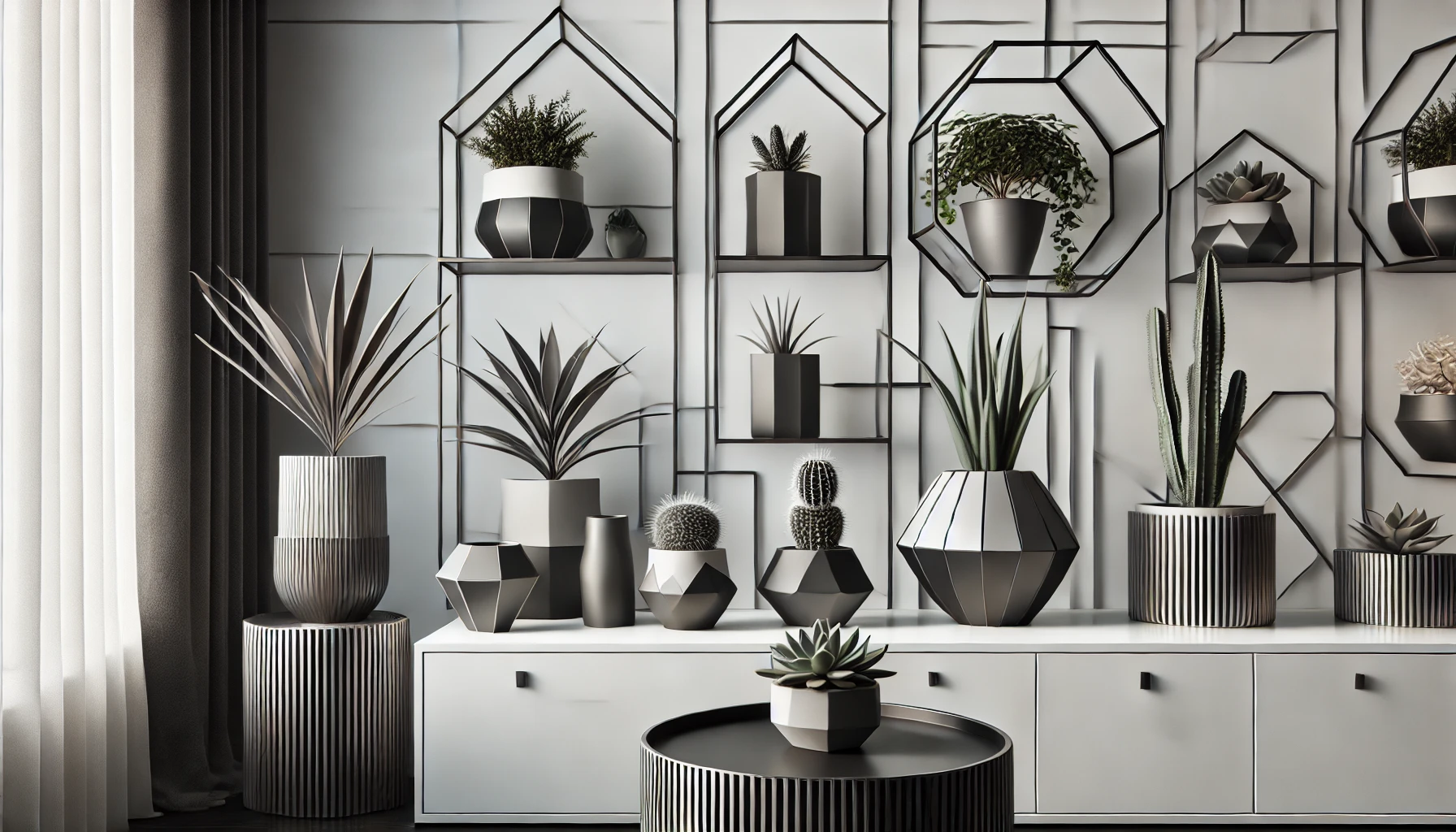
Incorporating Geometric Planters
For a modern indoor plant design, consider using geometric planters. These planters, often made of metal or ceramic, feature clean lines and minimalist shapes that complement modern interiors. Pairing geometric planters with sleek plants like succulents or cacti creates a contemporary look that is both stylish and functional.
Place geometric planters on shelves, side tables, or as part of a centerpiece to bring modern design elements into your home without overwhelming the space.
Monochromatic Plant Displays
Monochromatic plant displays are a great way to create a modern, cohesive look in your home. Choose plants with similar color tones, such as green succulents or ferns, and pair them with matching pots for a streamlined appearance. This design approach works particularly well in minimalist or modern homes where simplicity is key.
Use a variety of plant sizes to add depth and dimension to the display, and place them in a row on a shelf or windowsill for maximum impact.
Indoor Plant Design for Small Spaces: Maximizing Greenery
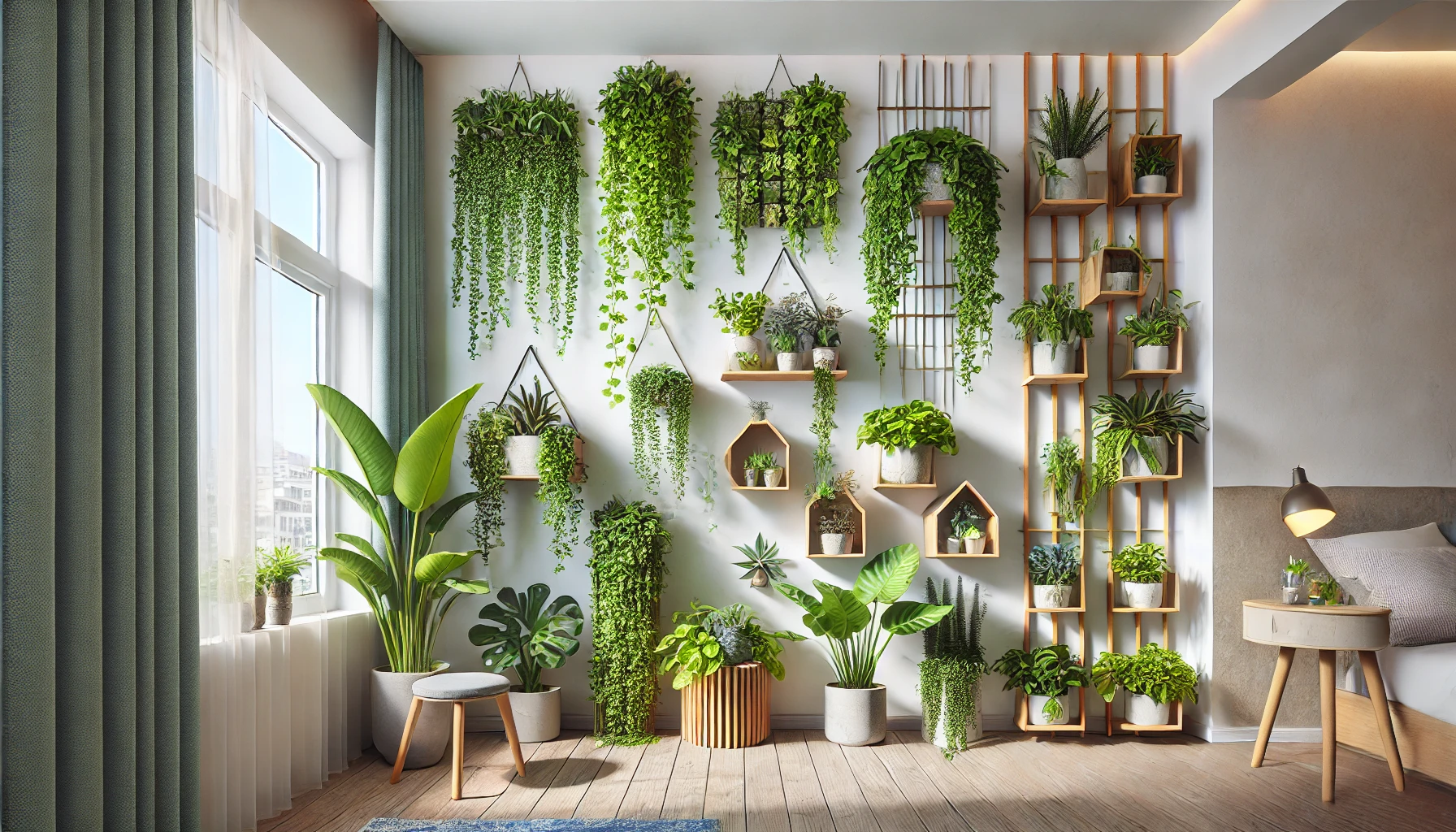
Vertical Gardens for Small Apartments
In small spaces, vertical gardens are an excellent solution for adding greenery without taking up valuable floor space. Use wall-mounted planters or hanging shelves to create a vertical garden in your living room, kitchen, or balcony. Vertical gardens not only save space but also add a unique, eye-catching element to your decor.
Choose a mix of trailing plants like ivy or pothos and upright plants like succulents or ferns to create a dynamic and visually appealing display.
Multi-Level Plant Stands
Multi-level plant stands are another great option for small spaces. These stands allow you to display multiple plants in one compact area, maximizing the amount of greenery you can fit into your home. Choose stands with different heights to create visual interest and make the most of your vertical space.
Place the stand near a window to ensure your plants get enough light, and use a variety of plants to create a lush, layered look.
How to Arrange Indoor Plants: Tips for a Balanced Design
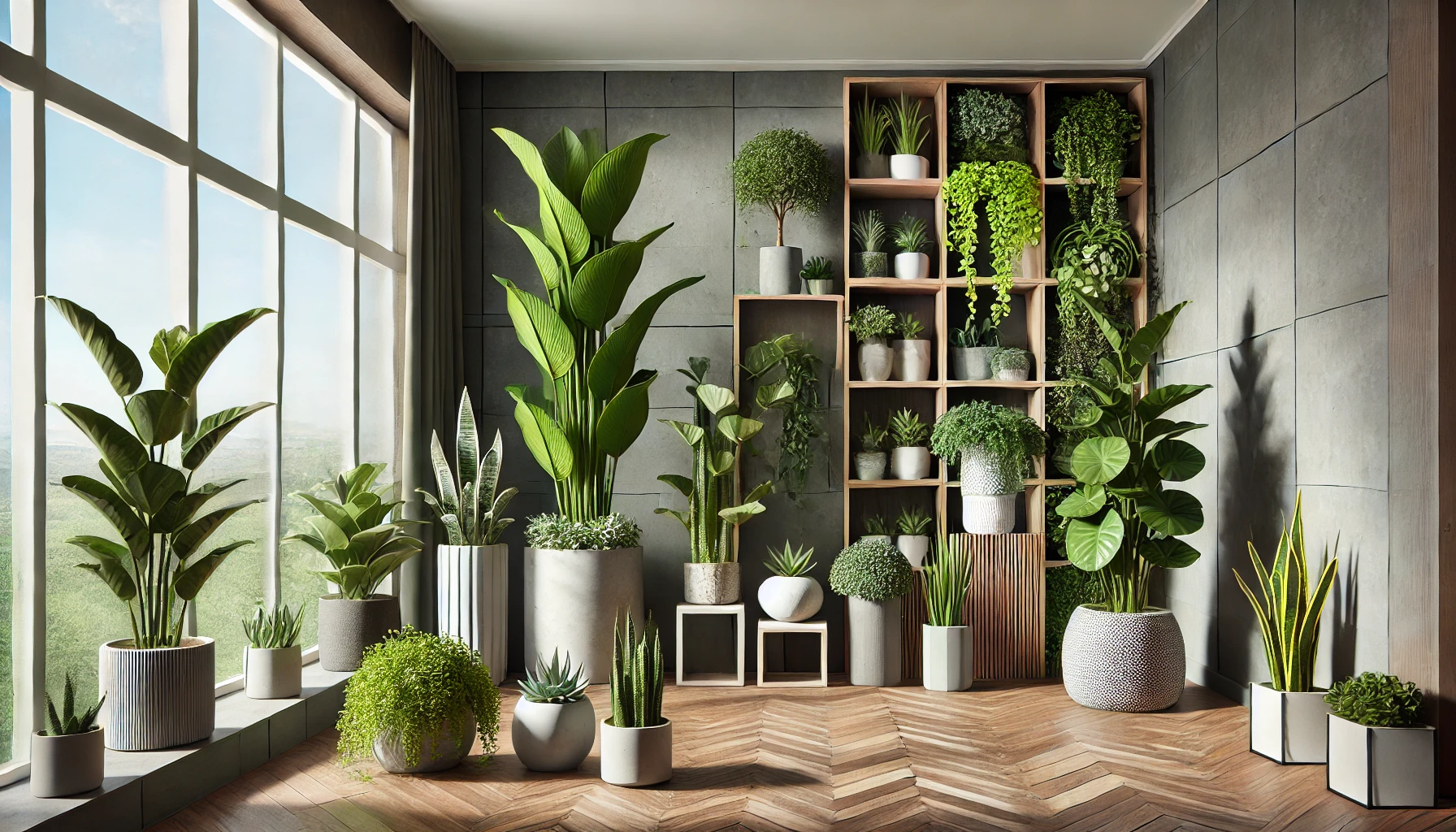
Grouping Plants for Visual Impact
One of the easiest ways to create visual impact with indoor plants is by grouping them together. Choose plants with different heights, shapes, and textures to create a balanced and interesting display. For example, pair a tall snake plant with a trailing pothos and a small succulent to create a dynamic arrangement.
Use odd numbers of plants for a more natural look, and vary the size and type of planters to add depth to the arrangement.
Creating Focal Points with Large Plants
Large indoor plants like fiddle leaf figs or monstera can act as focal points in your home. Place them in areas where they can be admired, such as next to a sofa, in an entryway, or by a window. These plants not only add greenery but also make a bold design statement that can elevate the overall look of your space.
Pair large plants with smaller ones to create balance, and use pots that complement the style of your home.
Elevate Your Home Decor with Indoor Plant Design
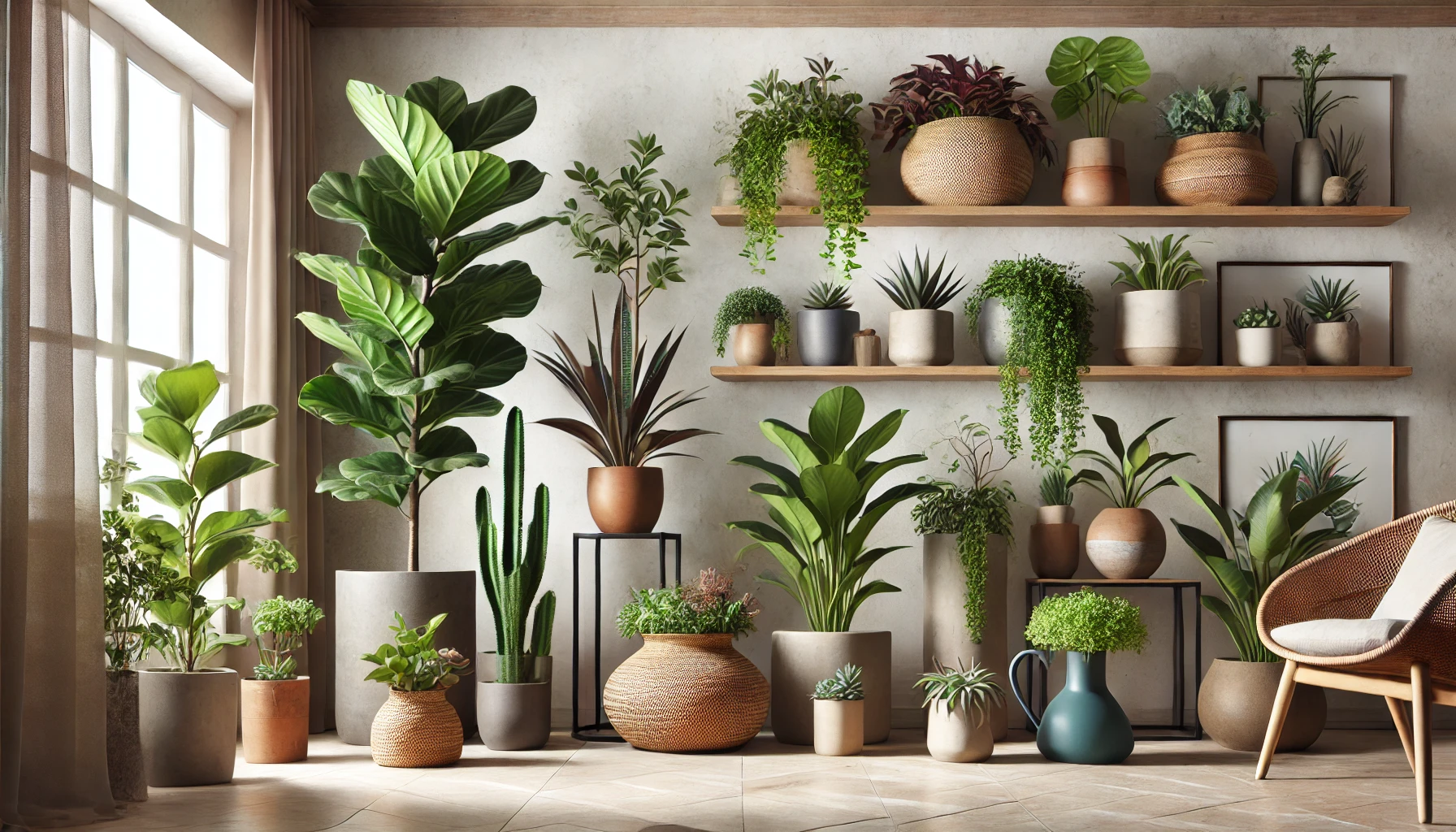
Indoor plant design is a versatile and impactful way to enhance your home decor. Whether you have a small apartment or a spacious home, incorporating indoor plants into your design can bring life, color, and texture to any space. By choosing the right plants, planters, and arrangements, you can create a stylish and refreshing environment that complements your personal style.
If you’re ready to transform your home with indoor plant design, contact us for expert advice and personalized solutions. Let us help you create a lush, beautiful home that brings the outdoors in.
Let’s Bring Nature Indoors
Thank you for joining us on this journey through indoor plant design. We are passionate about helping you create spaces that are both functional and beautiful. Whether you’re looking to add a few plants to your living room or create an indoor garden, we have the expertise to guide you every step of the way.
Contact us today to start your indoor plant design project. Together, we can create a home that reflects your style, improves your well-being, and connects you to nature.
FAQ: Indoor Plant Design
What are the best indoor plants for low-light spaces?
Some of the best indoor plants for low-light spaces include snake plants, pothos, ZZ plants, and peace lilies. These plants can thrive in environments with minimal natural light, making them perfect for darker rooms or apartments.
How do I arrange indoor plants in a small space?
To arrange indoor plants in a small space, use vertical shelves or hanging planters to maximize greenery without taking up floor space. Group smaller plants on windowsills or tables, and choose compact plants like succulents or air plants for tight areas.
What are the benefits of using indoor plants in home design?
Indoor plants enhance home design by adding visual interest, improving air quality, and bringing a sense of calm and relaxation to a space. They can also act as natural decor, transforming any room with their beauty and vibrancy.
What are the best indoor plants for beginners?
Beginner-friendly indoor plants include spider plants, pothos, ZZ plants, and snake plants. These plants are low-maintenance, resilient, and adaptable to various indoor environments, making them ideal for those new to plant care.
How do I create a modern indoor plant design?
To create a modern indoor plant design, use sleek, minimalist planters and choose plants with architectural shapes, such as succulents, fiddle leaf figs, or snake plants. Pair them with geometric pots or monochrome containers to achieve a stylish, contemporary look.
What are the best indoor plants for improving air quality?
Some of the best indoor plants for improving air quality include snake plants, spider plants, peace lilies, and Boston ferns. These plants are known for their ability to filter and purify the air, making your home healthier and fresher.
How do I design an indoor plant wall?
To design an indoor plant wall, use vertical planters or wall-mounted shelves to create a living wall. Choose a variety of trailing plants like pothos, philodendrons, or ivy, and mix them with upright plants for a lush, layered effect. Ensure the wall receives adequate light for plant growth.
What are some creative ways to display indoor plants?
Creative ways to display indoor plants include using hanging baskets, placing plants on multi-level stands, and arranging them on floating shelves. You can also use terrariums or decorative pots to create unique focal points in your home.
What are the best indoor plants for small apartments?
For small apartments, opt for compact indoor plants such as succulents, air plants, or small cacti. Use vertical planters, hanging baskets, or narrow shelving units to maximize space while adding greenery to your apartment.
How do I care for indoor plants with minimal sunlight?
Plants that thrive in minimal sunlight include snake plants, ZZ plants, and peace lilies. Water these plants sparingly, as they don’t require as much moisture in low-light conditions. Additionally, rotate the plants periodically to ensure even light exposure.
What are some indoor plant design trends for 2024?
Indoor plant design trends for 2024 include vertical gardens, using sculptural plants like fiddle leaf figs as focal points, and integrating plants into furniture design, such as coffee tables with built-in planters. Natural, organic textures like terracotta and wicker planters are also trending.
How do I incorporate indoor plants into my living room design?
Incorporate indoor plants into your living room by placing large plants like fiddle leaf figs or monstera in corners, using shelves for smaller plants, or creating a plant centerpiece on a coffee table. Hanging plants or trailing vines can add vertical interest to the room.
What are the best pots for indoor plants?
The best pots for indoor plants depend on your design style and the plant’s needs. Terracotta pots are great for plants that require well-drained soil, while ceramic or metal planters can add a modern touch. Ensure pots have drainage holes to prevent overwatering.
How do I design a minimalist indoor plant space?
To design a minimalist indoor plant space, choose plants with clean lines, such as snake plants or succulents, and pair them with simple, monochrome planters. Keep the design uncluttered by using fewer, larger plants rather than many small ones, and focus on natural light and open space.
What are the best indoor plants for offices?
The best indoor plants for offices include low-maintenance varieties like snake plants, pothos, and peace lilies. These plants improve air quality, reduce stress, and require minimal care, making them perfect for a busy work environment.
 Home Designing Get expert home decor tips and design inspiration at HomeDesigning.blog. Transform your living spaces with trending styles and DIY ideas!
Home Designing Get expert home decor tips and design inspiration at HomeDesigning.blog. Transform your living spaces with trending styles and DIY ideas!
